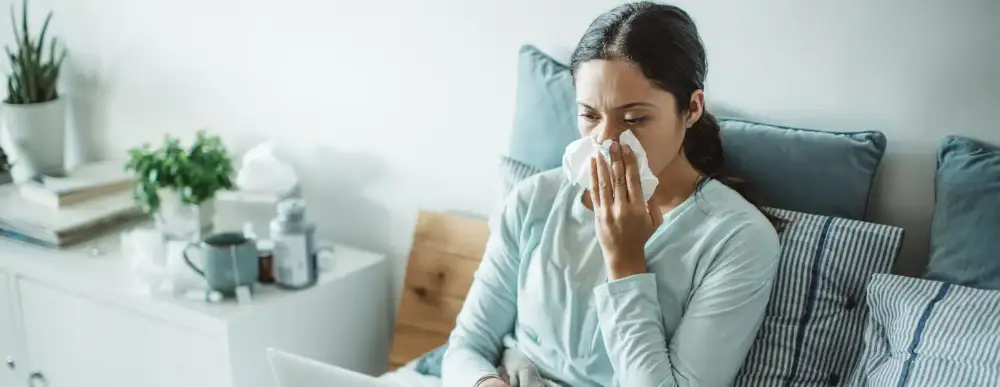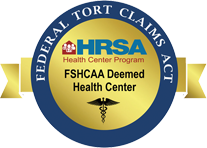We’ve all had a common cold. A cold is a mild viral infection of the nose, throat, sinuses, and upper airways. Colds are very common but kids age six and younger are at greatest risk for complications. Healthy adults can expect to have two or three colds annually, but kids can have as many as eight to twelve. When your child gets a cold, it does not necessarily mean you need to go to the doctor, but a common cold can lead to other problems that may mean a visit to a doctor.
Colds are viral infections that spread through coughing, sneezing, or even talking. The viruses can also be spread by hand-to-hand contact, and sharing contaminated objects like toys, utensils, or towels with someone who is sick. If you get a cold, you are contagious from a few days before symptoms begin until the symptoms are gone, which can take up to two weeks. Typical symptoms are a stuffy or runny nose, sore throat, sneezing, and coughing.
Though symptoms are usually mild, seek medical attention immediately if your child has any of the following symptoms: a fever of 100.4 in a newborn up to three months of age; a rising fever or fever lasting more than two days in any child; severe vomiting; symptoms that worsen or fail to improve; or severe symptoms such as unusual drowsiness, lack of appetite, wheezing, headache, persistent cough, ear pain, or extreme fussiness. These symptoms may mean something more serious is going on that may need to be addressed differently.
The most important thing you can do to prevent a cold or the spread of a cold is wash our hands thoroughly and frequently with soap and water. Other things that are helpful are to disinfect your kid’s toys, countertops, and door handles; teach kids to use tissues to sneeze or cough into. If a tissue is not available, teach kids to sneeze or cough into the bend of their elbow; don’t share drinks or utensils with someone who is sick; avoid contact with those that have a cold; and take care of yourself by eating well, exercising, getting enough sleep, and managing stress. Also stay away from smoking or others who do. Smoking compromises the upper airways making it easier for you to catch a cold and quite a bit harder to get rid of it.
Some things to try at home to relieve symptoms or to make a person with a cold more comfortable are to make sure they drink plenty of fluids – water, juice, and clear broth are good choices; give them chicken soup; keep them home from school to sleep and rest; keep the house warm and use a humidifier if the air is dry; try a saltwater gargle for a sore throat, try saline nose drops; and try over-the-counter cough and cold medicines for children over five. Home remedies may not make the cold go away quicker, but you might feel better while you’re waiting for your body to rid itself of the virus. And one final note, since antibiotics don’t help against cold viruses, don’t be surprised if your healthcare provider doesn’t give you one.
Candice Hutchins is an RN at the Health West Pediatrics clinic. She has been a nurse for seventeen years with most of her experience in Postpartum and well-baby nursery.

Better Night’s Sleep: Why It Matters and How to Get It







